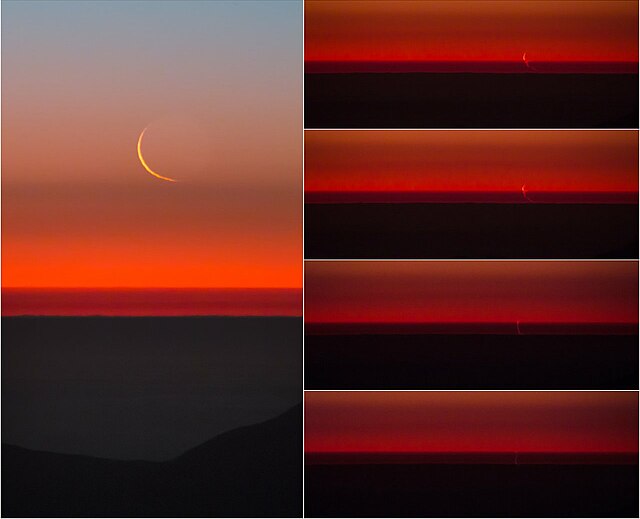Sunset is the disappearance of the Sun below the horizon of the Earth due to its rotation. As viewed from everywhere on Earth, it is a phenomenon that happens approximately once every 24 hours, except in areas close to the poles. The equinox Sun sets due west at the moment of both the spring and autumn equinoxes. As viewed from the Northern Hemisphere, the Sun sets to the northwest in the spring and summer, and to the southwest in the autumn and winter; these seasons are reversed for the Southern Hemisphere.
Actual sunset: Two minutes before the Sun disappears below the horizon.
Sunset over the Delaware Bay at Sunset Beach, New Jersey, U.S., seen through cirrus clouds
Evening twilight in Joshua Tree, California, displaying the separation of yellow colors in the direction from the Sun below the horizon to the observer, and the blue components scattered from the surrounding sky
Sunset on Mars
Atmospheric refraction is the deviation of light or other electromagnetic wave from a straight line as it passes through the atmosphere due to the variation in air density as a function of height. This refraction is due to the velocity of light through air decreasing with increased density. Atmospheric refraction near the ground produces mirages. Such refraction can also raise or lower, or stretch or shorten, the images of distant objects without involving mirages. Turbulent air can make distant objects appear to twinkle or shimmer. The term also applies to the refraction of sound. Atmospheric refraction is considered in measuring the position of both celestial and terrestrial objects.
The atmosphere refracts the image of a waxing crescent Moon as it sets into the horizon.
Atmospheric refraction distorting the Sun’s disk into an uneven shape as it sets in the lower horizon.






